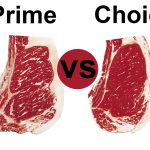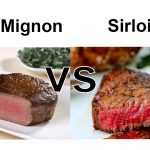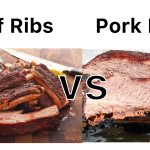When it comes to cooking an amazing BBQ brisket, one of the most important decisions is understanding flat vs point cut. While both are flavorful and equally delicious choices, they offer different advantages depending on preference, budget and time available. Whether you’re a novice or an expert in the art of BBQ smoking a little knowledge can go a long way towards satisfying your taste buds!
In this blog post, we’ll explore the two types of brisket cuts flat and point dive into their unique characteristics as well as how to cook them for maximum flavor. So read on to become an expert barbecue master and learn everything there is know about Flat Vs Point Cut Briskets!
What is the Brisket Flat?

The brisket flat is the larger of the two types of cuts and also the most common. It’s found along the front of the cow, near its stomach area, and has less fat than other parts which makes it ideal for slow-cooking. A typical flat cut can weigh anywhere from 4 to 8 pounds, making it easy to buy in bulk at a reasonable price. But because this cut generally lacks fat, many cooks prefer to marinade or inject it with liquid beforehand to add flavor and tenderness during cooking.
Brisket Flat Nutrition Facts:
– Calories: 266
– Protein: 29.9g
– Fat: 17.1g
– Carbs: 0g
– Fiber: 0.2g
What is Point Cut?

Point Cut Brisket comes from behind the animal near its shoulder area and contains more connective tissue as well as fat known as “bark”. This makes it a more flavorful choice, and it also takes less time to cook compared to the flat cut because of its higher fat content. However, point cuts tend to be expensive due to their larger size, which can range from 8-15 pounds.
Point Nutrition Facts:
– Calories: 282
– Protein: 28.5g
– Fat: 20.6g
– Carbs: 0.2g
– Fiber: 0.2g
What Is The Difference Between Brisket Flat and Point?
The main difference between brisket flat and point is the amount of fat present in each cut. Brisket flat has less fat, making it a more affordable option that takes longer to cook compared to the point. Point Cut Brisket has higher levels of fat which makes it more flavorful but also significantly pricier.
5 Difference Between Brisket Flat and Point:
1. Fat Content: Brisket flat has less fat while Point Cut contains more.
2. Cost: Flat cuts are typically more affordable compared to point cuts due to their smaller size and lower fat content.
3. Time To Cook: Point cut takes less time to cook because of the higher levels of fat present in it, while flat can take much longer due to its leaner composition.
4. Availability: Flat cuts are generally found at most grocery stores, while point cuts may be harder to find depending on location.
5. Flavor: Both provide a delicious taste but point cuts tend to have a richer flavor profile due to its increased fat content and bark layer which adds more depth of flavor during cooking.
Similarities of Brisket Flat and Point:
1. Texture: Both brisket flat and point cut have the same tenderness when cooked correctly.
2. Uses: Both cuts can be used for a variety of dishes, from delicious sandwiches to pulled pork tacos or even slow-cooked beef stew!
3. Versatility: Brisket flat and point are both incredibly versatile when it comes to recipes, making them great options for any occasion.
Which is better Flat or Point Brisket?
The answer to this question isn’t clear cut, as both cuts have their own unique advantages. Brisket flat is a great option for those on a budget but still want delicious flavor, while point cut provides an overall more intense taste due to its higher fat content. Ultimately, it comes down to personal preference and what you’re willing to pay for the flavor and texture you desire!
At the end of the day, you can’t go wrong when choosing between the two types of briskets. Whether you opt for the leaner flat cut or the more flavorful point cut, they are sure to provide an amazing BBQ experience! So go ahead and experiment with different recipes until you find your perfect combination!
Flat Vs Point Cut Brisket: How To Cook?
Now that you understand what each type of brisket is, let’s dive into how to best cook them for maximum flavor! The Flat Cut Brisket should be slow cooked at low temperatures (225-250°F) over indirect heat for a long period of time anywhere from 8-12 hours depending on the size so that all the delicious flavors have a chance to meld together. Marinating beforehand is also recommended in order to add additional flavor as well as help keep the brisket moist throughout the cooking process.
On the other hand, Point Cut Brisket should be cooked on higher heat (275-350°F) for about 6-7 hours over indirect heat. This will give it a crispy bark that many people desire and can help to tenderize the meat without drying it out. To ensure your point cut doesn’t dry out during this process, adding an extra layer of foil or using a water pan are good options; just make sure you don’t wrap it too tightly so that air can still circulate around the brisket!
FAQs: Brisket Flat vs Point
What is the difference between brisket flat and point?
The main difference is the amount of fat present in each cut; brisket flat has less fat while point cut contains more. Flat cuts are typically more affordable compared to point cuts due to their smaller size and lower fat content, while point takes less time to cook because of its higher fat content.
Which one should I buy?
It really depends on your preference and budget. Brisket flat is a great option for those on a budget but still want delicious flavor, while point cut provides an overall more intense taste due to its higher fat content. Ultimately it comes down to personal preference and what you’re willing to pay for the flavor and texture you desire!
What is the best way to cook each cut?
Flat Cut Brisket should be slow cooked at low temperatures (225-250°F) over indirect heat for a long period of time anywhere from 8-12 hours depending on the size. Point Cut Brisket should be cooked on higher heat (275-350°F) for about 6-7 hours over indirect heat and adding an extra layer of foil or using a water pan are good options to ensure it doesn’t dry out during this process.
Is Flat or Point More Popular?
Point cut is the more popular choice among BBQ enthusiasts due to its higher fat content and intense flavor. However, flat cuts are becoming increasingly popular as well due to their affordability and versatility.
Does a Brisket Flat or Point Cook Faster?
Point cut cooks faster than flat due to its higher fat content. It can be cooked in around 3-4 hours, while a flat cut may take up to 5 hours or more depending on size and desired doneness.
Should You Separate Point and Flat?
Although it’s not necessary, some BBQ enthusiasts prefer to cook their point and flat cuts separately. This can be beneficial if you’re looking for different flavor profiles or doneness levels as the shorter cooking time of the point cut may lead to overcooking the flat cut in a single session.
How to Separate Point and the Flat?
To separate the point and flat, cut along the fat line that separates them. Start at one end and work your way down until you reach the other side. This will ensure that each cut is cooked to perfection!
What is the brisket deckle?
The brisket deckle is a section of the point cut that is located between the top and bottom of the cut. It is much smaller in size than either the flat or point, but it does have a higher fat content which makes it more flavorful. This cut can be cooked separately from the main brisket portions or included in recipes with other cuts for added flavor.
What are some popular ways to cook brisket?
Some popular methods for cooking brisket include slow-cooking, grilling, smoking and braising. Slow-cooking will provide an incredibly tender texture while smoking brings out the intense flavors of this cut. Grilling gives a slightly crispy char on the exterior while braising infuses moisture and flavor into this delicious cut.
Conclusion
Choosing between the Flat and Point Cut Brisket is a matter of preference. Both cuts offer delicious, juicy flavor that will have your mouth watering! But it’s important to understand the differences so that you can get the most out of each cut depending on time available, budget and desired texture. So take some time to explore both options and experiment with different cooking methods to find what works best for you. And don’t forget: there’s no such thing as bad BBQ only more delicious opportunities waiting to be discovered!

William Lariviere is a chef and restaurateur with over 25 years of experience in the food industry. He is the owner and operator of Swartzsdeli.com, an online restaurant that specializes in gourmet sandwiches and salads, grill & smoke. He likes to share experience, food, recipes cooking knowledge as well as reviews about restaurant and kitchen products.
William’s goal is to provide his customers with healthy, delicious food that is also affordable and develop Swartzsdeli.com into a comprehensive information site specializing in cooking and cuisine to a new level to help reach a wide range of housewives and readers.








